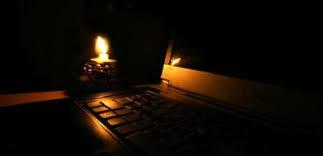What would you do if the power went out, and you were busy typing on your laptop and racing to get something done? Power outages in Texas and Portland, Oregon, in the US, last February were a stark example of this common problem, which must be taken into account when developing any business continuity plan. For this reason, we spoke with some of those who have suffered from power outages for a long time, and we learned from them their strategies for action when this problem occurs, and their answers were as follows:
Boost your phone:
If your phone runs out of battery; You will lose everything. “I live in Lagos, Nigeria, and there's a power outage every day,” says Omiti Charles-Davies, founder of One Doctor, a health-tech startup, adding that she keeps an extra battery replacement the size of Palms, such as the Anker PowerCore 10,000 mAh batteries ($25 each). Davis packs this battery in her bag so she can power her phone wherever she goes.
Connect your devices to external power sources:
Small backup power supplies, like the $399 Anker PowerHouse II, can keep your Wi-Fi router running In addition to charging your laptop, tablet, and phone a few times. You can also hook it up to some solar panels; to keep it charged indefinitely. But remember that cloudy weather (or no sun) can derail this plan.

Get Internet from your phone (hotspot):
“Getting mobile internet on is a the solution". So, before you get in trouble, you should check your mobile internet now and see if your mobile data plan will last you for a few days.
You can also buy one of the devices dedicated to hotspot networks, such as: "Skyroam's Solis X" or "Solis Lite", as they cost $ 179 and $ 119, respectively, and can be connected to 10 devices maximum, and they can be played by paying for a one-day subscription to the service, or by prepaying per gigabyte ($9 per day, or $6 per gigabyte).
Use backup batteries:
If the hours pass, and the power outage lasts, then you can count on a huge battery, such as the $5,991 Jackery 1500, which can run a microwave. , coffee maker and refrigerator (each separately), as well as all your appliances or work equipment. The added advantage of this battery is that you can recharge it from your car, or using the solar panels, allowing you to keep going. Although this huge battery is ideal in the event of a power outage for a day, two or three, many have not thought of owning one of them before.
Use a generator:
When the power is out for long periods, the simplest solution is to use a generator, such as the Honda EU 3000, which is characterized by its very low noise, which is Priced at $2,529. This generator powers office essentials such as air conditioning, refrigerator, lights, and computers.
The disadvantages of using these types of electric generators are that they require fuel storage, in addition to that they need external electrical wires that must be placed at a safe distance away from the building.
"Using a generator allows you to carry on with your business as usual," says Jessica Glazer, Founder and President of MindHR, a recruitment and resume agency in Montreal, Canada. "I have a main generator, and I keep another one back up," she adds. But first, be sure to check the rules for using generators, depending on the laws of the area in which your building is located.
For just a few thousand dollars more, you can get backup batteries powerful enough to keep everything you need to power at home or in the office. "There are times when the power goes out in the area for hours, and in some cases days, because of the winter ice storms," says Stephen Houseman, a lecturer in emerging technologies who lives near Washington, DC. Haussmann has upgraded his equipment from relying on a regular petrol generator to using a huge battery that gives him full power backup for at least a day, which is augmented by solar panels, and a small generator that also runs on gasoline.
Evacuation Plan
Prepare a travel bag and an evacuation plan if necessary. “Our rescue plan in the event of a major crisis depends on moving employees to hotels,” says Jacob of Filter King, after surviving a tropical storm disaster in Miami. "We generally drive about three hours north, to get to a safer area, and then get everyone back online."
Pro tip:
Finally, says Parmida Chahusini, founder of hair accessories brand Parmida Nouri, who worked through power outages during the recent storm in Texas: I highly recommend investing in battery-operated lights." And the $10 LED string lights are ideal because you can easily bend and direct them to where you need the light. "These lamps have saved me perfectly," Shahosini says.
